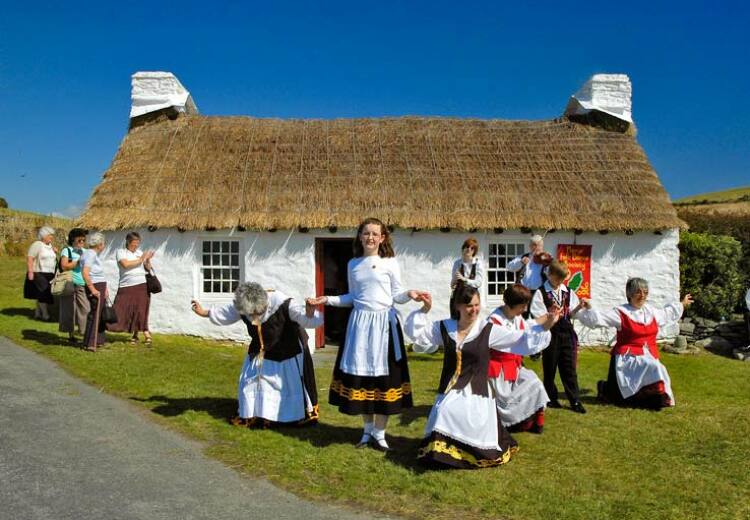A MAJOR campaign is planned later this year to sell Manx queenies to England - where the unique shellfish is virtually unknown.
Some of the country’s top restaurants already have the Manx delicacy on their menus, but sales of queenies generally - particularly in supermarkets - are almost non-existent, whereas queenies are very well known in countries such as France, Spain and Italy.
The intention to market Manx queenies more strongly in the UK has been revealed by Manx fishermen and processors who are celebrating the recent news that Isle of Man queen scallops have won the top award at the 2011 Sustainable Seafood Awards, beating five other finalists at Billingsgate Seafood School in London.
Moves have already begun to to promote queenies within supermarkets across the country such as Morrisons and Tesco and local fish processors plan to strengthen existing links with major fish retailers to make UK consumers more familiar with the product.
The growing reputation of the Manx queenie was also highlighted last week when it was revealed that The Fat Duck - the ‘world’s best restaurant’ run by Heston Blumenthal - is sending staff to the Isle of Man to discuss sourcing queenies for its menu.
The Isle of Man’s queenie industry has made significant steps forward in recent years with new measures introduced to maintain stocks and major investment in scientific research to ensure stocks remain sustainable.
However, 90% of all Manx seafood is sold in Europe, with very little sold in the UK and England in particular. Manx queenies, especially, are a firm favourite with the French, Spanish and Italians.
The fishing industry in the Isle of Man is worth around £10 million to the economy and employs around 300 people.
Every single queenie caught in the Isle of Man is hand-shucked - something unique for the Island. In fact, a queenie can only officially be called a “Manx queenie” if it is hand-shucked. Queen scallops are only found in very few other parts of the British Isles - most notably off Ireland, The Clyde and Wales. However, all these catches are extracted using machinery. The Manx queenie, therefore, has a unique position within the industry.
The Isle of Man’s queenies also have a low carbon footprint, low food miles and - because of the newly introduced minimum catch size - each queenie has spawned at least twice before it is caught. Queenies are mature after two years and live for up to around 5 years but have only been fished in the Isle of Man for a relatively short period of time, starting in the early 1970s.
The amount of queenies caught in the whole of the UK each year is approximately 15 tonnes, with the majority being caught in Manx waters and more than 50% of the quality market (restaurants, hotels etc) is sourced from the Isle of Man.
Speaking to a gathering of fishermen and fish processors, Andy Read, the government’s director of fisheries, said the intention in the future is to help Manx fishermen make more money, but on a sustainable basis.
He said the last three years had seen a great deal of of hard work and consultation within the industry. He said it was difficult to asses the size of the queenies stock because it goes up and down, but the current trend is “definitely upwards” and he paid tribute to the fishermen and the fish processing industry for their co-operation in scientific research over the three years.
“The big news is that the Isle of Man’s methods of catching queenies have resulted in the fantastic achievement that the introduction of a queenie riddle now means the 100% survival of discarded queenies which are under-size.
“There is also only a minimal bycatch of other species. There is a small by-catch of cod, but it is only one tenth of the EU figure and scientific evidence gathered in recent years, when more than 15,000 photographs were taken of the seabed, show that new queenie fishing methods by Manx fishermen are not harming the seabed. The Isle of Man also has 40 sq kms designated as a ‘no trawl’ zone, further protecting stocks.”
Another important factor has been the recognition of the Isle of Man’s fishing industry by the Seafood Industry Authority’s Responsible Fishing Scheme (RFS). “It has become the ‘badge of honour’ within the seafood industry,” added Andy Read. “Many companies in the UK are now refusing to deal with distributors who are not RFS approved.”
The Isle of Man is also seeking recognition as a Protected Designation Origin (PDO) - with a decision on this expected by the end of the year.
Billy Caley, a fisherman since boyhood, paid tribute to the background work which had been conducted in recent years by the fishermen and government to improve the Manx queenie industry and he made particular reference to Andy Read’s contribution. “I believe it was Andy’s presentation which clinched it,” he said.
“It’s sustainability that matters. We have all worked together and worked hard for this achievement. In another two to three years we will have a much clearer vision of the long term future, but for the moment I know that everyone in the local industry is looking forward to the new summer season.”
Tim Croft of Island Seafare Ltd said that fish processors on the Isle of Man were also ready to invest in handling more queenies in the future, stressing that he felt it was “vital” that the control over the production remained within the Island.
“If we are to build on sustainability then the Isle of Man should not allow the products to go off the Island for processing. It is much better if that control is retained within the Island. There is a good partnership here between the fishermen, the processors and the government. It involves conservation, sustainability and good management and it’s a partnership which works.”
He also pointed out that the Isle of Man had worked hard in recent years to establish strong business links with important companies within the industry, including a partnership with a French fish retailer which is, in fact, the second biggest fish retail company in the world.
“The bigger size of queenies has also made a difference,” he added. “The new landing size means we have been able to enter new markets where we have never been before. For the first time we are finding that top quality restaurants are now approaching us and asking about Manx queenies.
“The reputation is definitely growing - the aim now is to get restaurants all over Britain asking fish producers for Manx queenies. It is starting to happen to some extent and I’m confident we will see steady growth in sales in the UK in the future.”

Researching your Manx family history can be a very interesting and rewarding hobby. Trace your roots in the Isle of Man with our helpful of guide.







